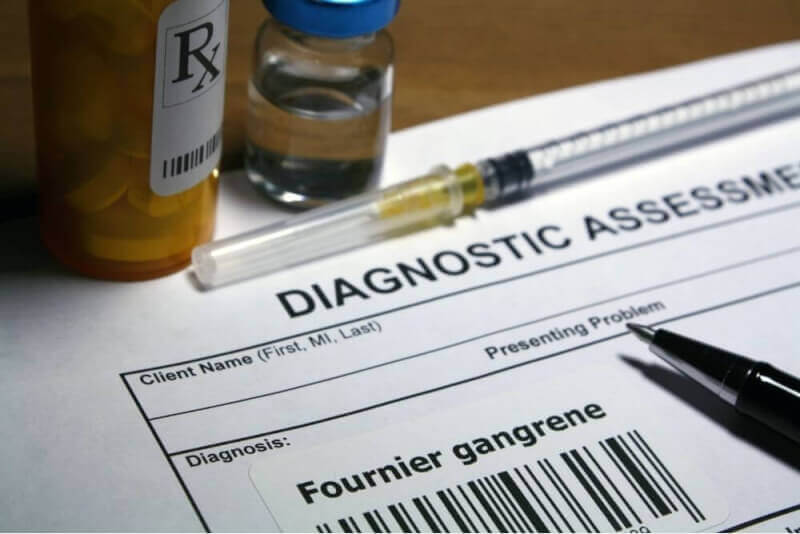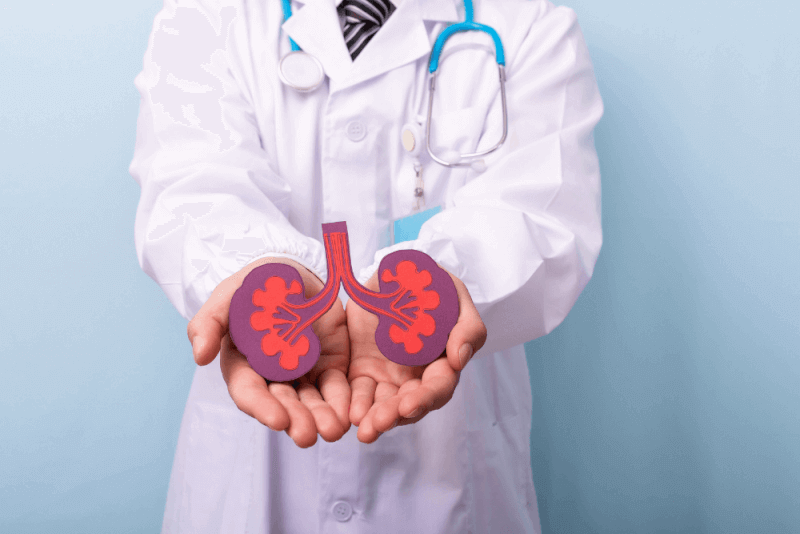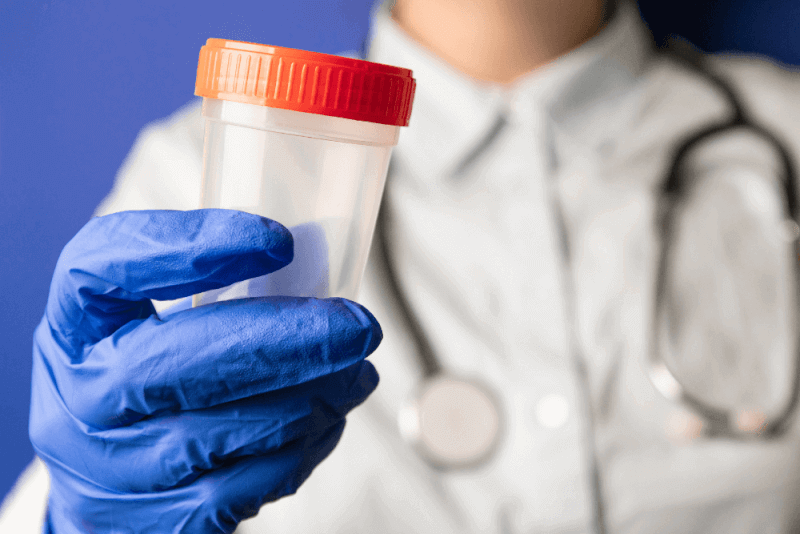What is Fournier's Gangrene?
Fournier's gangrene is a gangrenous condition that can affect the perineum, anal area and the area around the genitals. Gangrene is the death of tissue caused by the cessation of blood flow. Blood flow can be cut off due to infection, hypothermia, etc., which leads to gangrene.
Gangrene in tissues or organs is a very important issue. When blood flow is interrupted for any reason, tissues are deprived of oxygen and ischemia and tissue loss occurs due to ischemia. Fournier's gangrene is a serious condition that requires urgent intervention. It is known to be 10 times more common in men, but it can also occur in women and children.
Fournier's gangrene, especially in men in their 50s, starts in the testicular region and progresses to the penis and perineum. Left untreated, it has the risk of spreading from the genitals to the thighs, stomach and breasts. It is generally known that the cause of gangrene is infection.
Diagnostic Criteria for Fournier Gangrene
Infection is considered as the first cause of Fournier's Gangrene, or if the person has had a perianal surgical treatment, it is checked whether it is a condition that develops from this. The patient undergoes a physical examination. Symptoms on physical examination may be as follows:
- Skin discoloration (necrosis, tanning, blackening, foul-smelling discharge)
- Puffiness of the skin
- Bad odor on the skin
- Perianal pain
- Fire
- Tremor
- Tachycardia
- Symptoms such as fatigue may be observed. At the beginning of the spread of the infection, the disease usually goes unnoticed as there are no skin symptoms.
The patient's history should be taken to determine whether it is due to trauma or infection. A previous infection, a surgical operation, frostbite caused by hypothermia can also cause Fournier's gangrene. In addition, conditions such as diabetes, hypertension, malignancy and excessive alcohol consumption are also risk factors.
In addition to the physical examination, a blood test is performed. Complete blood count, CRP, blood gas, blood culture, tissue culture are also checked. Imaging methods such as ultrasonography, CT and X-ray should be used to evaluate the area of infection and the condition of the tissue.
Causes of Fournier's Gangrene
Fournier's gangrene is usually caused by infection. It can be seen after urinary tract infections, sexually transmitted diseases, perianal or perinatal surgeries. It may also occur due to conditions such as fistula and abscess in the anal area.
Unlike these, it occurs due to the following reasons:
- Traumas caused by blows to the skin
- After male sterilization surgeries
- Rectal cancer or injuries to the rectum
- Birth-related anomalies
- Long-term use of a urinary catheter
- Diabetes and obesity
- Severe renal failure
- Hypertension
- Cardiovascular diseases
- Intestinal perforation
- HIV, collapse of the immune system
- Vascular diseases
- Alcohol and drug addiction
- After biopsy or polyp removal during colonoscopy
- After taking a biopsy during cystoscopy
- Incorrect procedure during circumcision
- Conditions such as incorrect piercing use can cause Fournier's Gangrene.
Symptoms of Fournier's Gangrene
Although Fournier's gangrene does not show any physical symptoms in its early stages, symptoms usually start with pain in the genital area and around the anus. When signs of infection such as warmth, redness, swelling and itching appear on the skin, the patient can be treated with an appropriate antibiotic. Apart from these symptoms, the following symptoms also indicate Fournier's gangrene;
- Stench on the skin
- High fever
- Anemia
- Crunching or rustling sounds when the skin is touched with a finger
- Blackening, tanning, reddening of the skin
In advanced stages of the disease, the pain sensation disappears. In the late stage of the disease, multiple organ failure occurs due to infection in the blood.
Fournier Gangrene Treatment Methods
Early diagnosis and early treatment are very important for Fournier's Gangrene. The risk of survival is much lower in the later stages of the disease. After taking the patient's anamnesis, a physical examination is performed and imaging methods such as ultrasound, CT or X-ray are used to find the cause of the disease.
Broad-spectrum antibiotic treatment should be initiated first. Surgery is performed to remove the gangrenous area of the skin. Dead tissue is removed until living tissue is visible and the infection is prevented from progressing. After the removal of the dead tissues, in some cases the damaged tissues are reconstructed with a skin graft or other surgical operation.
Antibiotic Treatment of Fournier's Gangrene
Once Fournier's Gangrene is diagnosed, the patient is started on a broad-spectrum antibiotic. A broad-spectrum antibiotic is important to stop the bacteria causing the infection. Usually more than one antibiotic is used and penicillin is one of the most commonly used antibiotics.
In addition to antibiotic treatment, fluid supplementation may be given to prevent fluid loss. In gangrene caused by diabetes or hypertension, electrolyte and blood sugar abnormalities must also be corrected.
Fournier's Gangrene Healing Process
Fournier's gangrene is a disease that progresses rapidly and can lead to fatal consequences if treatment is not started immediately. Once diagnosed, the patient should be urgently hospitalized and treatment started. Early broad-spectrum antibiotic treatment may be beneficial.
Surgical intervention in the non-progressed stages of the disease is a condition that significantly increases the recovery rate. In the early period, the infected area should be cleaned by removing dead tissues. Once the infection is fully under control, the area where the dead tissue has been removed is covered with patches taken from different parts of the body.
The healing process varies from person to person and many factors affect the healing process. Advanced age, multiple organ failures, late diagnosis, imbalance in vital functions, diabetes, obesity, hypertension, etc. are signs that the recovery process will be delayed.
Is Fournier's Gangrene Contagious?
It is a disease that is transmitted from person to person. Transmission to the person is caused by an infection that settles in the area where the genitals are located or in the perineum. Transmission of infection can be spontaneous or may occur after surgery, trauma or hypothermia.
The course of the disease is very rapid and early diagnosis and treatment are therefore very important. Infections involving subcutaneous tissue, tissues and organs should be stopped with antibiotic treatment and surgical treatment of necrotic tissue. After the surgical procedure, dressings should be done regularly and sterile to minimize the risk of infection.

















